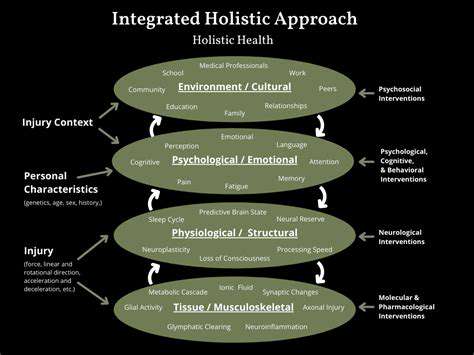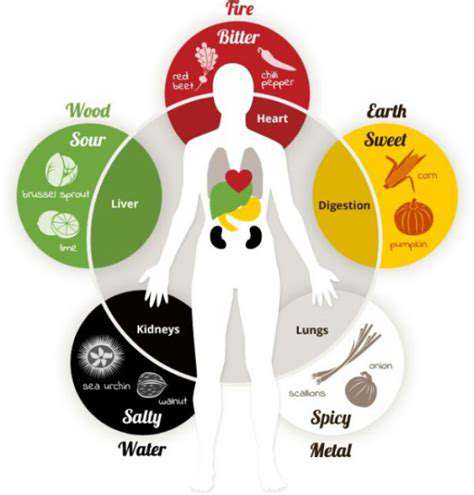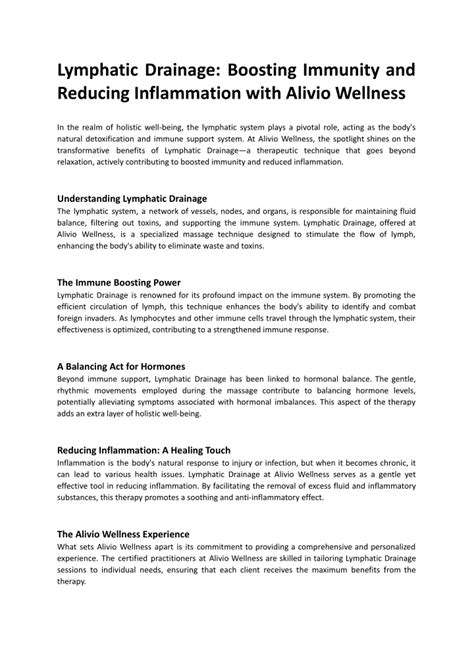TCM for Colds and Flu: Natural Prevention and Treatment
Dietary Considerations
Traditional Chinese Medicine (TCM) emphasizes the importance of diet in preventing and treating colds and flu. A balanced diet rich in fresh fruits, vegetables, and whole grains provides essential nutrients that support a healthy immune system. Foods like citrus fruits, ginger, and garlic are often highlighted for their antiviral and immune-boosting properties. Avoiding excessive consumption of processed foods, sugar, and unhealthy fats is equally crucial for maintaining optimal health and resilience against these viral infections. A nourishing diet acts as a cornerstone in TCM's approach, fostering a strong internal environment to combat illness.
Furthermore, TCM suggests paying attention to the qualities of foods. Some foods are considered warming, while others are cooling. Understanding these qualities can help you choose foods that support your body's specific needs during an illness or as a preventative measure. This nuanced approach to nutrition goes beyond simple nutrient intake, considering the energetic balance of the foods you consume and their impact on your overall well-being.
Herbal Remedies
TCM utilizes a wide array of herbal remedies for supporting the body's natural defenses against colds and flu. These remedies, often formulated in teas, decoctions, or tinctures, are carefully selected based on their ability to address the specific symptoms and underlying imbalances. Ginger, for example, is frequently used to soothe sore throats and reduce inflammation, while astragalus is known for its immune-boosting properties. The careful selection and preparation of these herbs are vital for maximizing their therapeutic benefits.
It's crucial to remember that herbal remedies, while generally safe, can have interactions with other medications. Consulting with a qualified TCM practitioner is essential before incorporating herbal remedies into your treatment plan, especially if you are taking other medications or have underlying health conditions.
Mindfulness and Stress Management
TCM recognizes the profound link between mental and physical health. Stress and emotional distress can weaken the immune system, making individuals more susceptible to colds and flu. Practicing mindfulness techniques, such as meditation and deep breathing exercises, can help manage stress and promote a sense of calm, bolstering the body's ability to fight off illness. Engaging in activities that promote relaxation and emotional well-being are key components of a holistic approach to preventing and managing colds and flu.
Lifestyle Adjustments
TCM emphasizes the importance of a balanced lifestyle to maintain overall health and resilience against illness. Getting sufficient sleep, avoiding overexertion, and maintaining a regular sleep schedule are crucial for supporting the body's natural healing processes. Adequate rest allows the body to repair and regenerate, strengthening the immune system's defenses. Maintaining a consistent sleep schedule and avoiding prolonged periods of stress are vital for optimizing overall health and well-being, crucial for preventing and recovering from colds and flu.
Acupuncture and Gua Sha
Acupuncture, a cornerstone of TCM, involves the strategic insertion of thin needles into specific points on the body. These points are believed to influence energy flow and promote healing. In the context of colds and flu, acupuncture can be used to alleviate symptoms like headaches, muscle aches, and congestion. Gua Sha, another TCM technique, involves scraping the skin with smooth stones or other tools. This practice is believed to improve blood circulation and reduce inflammation, potentially aiding in the recovery process. These modalities, when used as part of a comprehensive treatment plan, can effectively support the body's natural healing mechanisms.
Regular Checkups and Prevention
While TCM offers valuable preventative and treatment strategies, it's important to maintain regular checkups with medical professionals and adhere to recommended preventative measures, such as frequent handwashing and avoiding close contact with individuals who are ill. This holistic approach complements conventional medical practices, fostering a comprehensive strategy for maintaining optimal health and well-being. This combination approach ensures a robust defense against viral infections, emphasizing the importance of both traditional and modern health practices.











